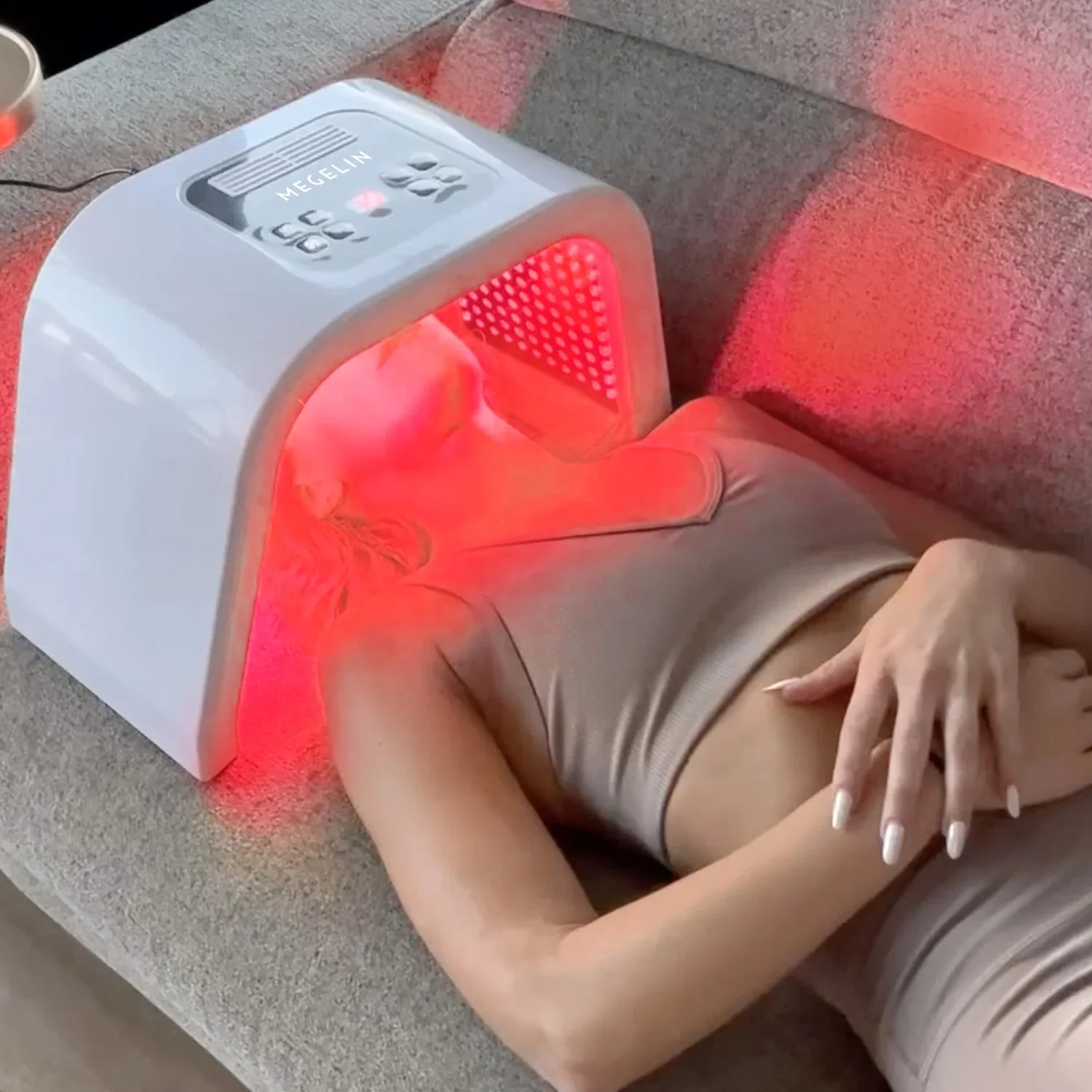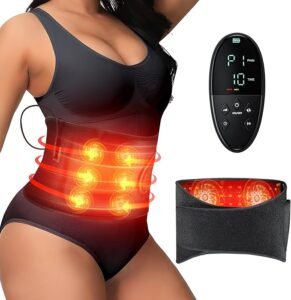
Expert Insights, Beyond the Basics, and Revolutionary Techniques in Red Light Therapy
Red light therapy (RLT) has evolved from a niche treatment into a mainstream wellness solution with applications in skincare, pain relief, athletic recovery, and more.
While most people are familiar with its surface-level benefits, such as reducing wrinkles or alleviating muscle soreness, few venture beyond the basics to explore the full potential of this transformative therapy.
In this post, we’ll share expert insights that delve deeper into the science of red light therapy, explore advanced techniques to optimize its use, and reveal revolutionary approaches to achieving the best results.
Whether you’re new to RLT or looking to take your practice to the next level, this guide offers actionable advice and cutting-edge information.
Understanding the Science: Expert Insights into Red Light Therapy
Red light therapy works by delivering wavelengths of red and near-infrared (NIR) light to the body.
These wavelengths penetrate the skin and stimulate mitochondrial activity, enhancing the production of adenosine triphosphate (ATP), the energy currency of cells.
This increase in cellular energy facilitates repair, reduces inflammation, and supports overall rejuvenation.
Key Expert Insight:
Different wavelengths target different layers of tissue.
Red light (630–660nm) works best for skin-level issues like acne, wrinkles, and scars, while near-infrared light (810–850nm) penetrates deeper, benefiting muscles, joints, and even bones.
Pro Tip: Use a combination of red and NIR light to address both superficial and deeper concerns simultaneously. Devices that offer dual-wavelength functionality are ideal for this purpose.
The Power of Mitochondrial Stimulation:
Experts emphasize that mitochondrial health is at the core of many chronic conditions.
By enhancing mitochondrial efficiency, RLT supports the body’s natural ability to heal and regenerate, addressing issues like fatigue, aging, and inflammation at a cellular level.
Going Beyond the Basics: Advanced Techniques in Red Light Therapy
1. Personalize Treatment for Specific Goals
While generic RLT sessions can be beneficial, tailoring your approach to your individual needs will yield better results. For example:
- Use red light for 10–15 minutes on your face to boost collagen and improve skin texture.
- Apply near-infrared light to sore muscles or joints for 20–30 minutes to reduce pain and inflammation.
2. Experiment with Layered Treatments
Stacking RLT with other treatments can amplify its effects. Common combinations include:
- Cryotherapy: Use cryotherapy before RLT to reduce surface inflammation, allowing the red light to penetrate more effectively.
- Skincare Products: Pair RLT with antioxidants like vitamin C to enhance cellular repair and reduce oxidative stress.
3. Optimize Session Timing
Experts recommend syncing your sessions with your circadian rhythm.
Morning sessions can energize you for the day, while evening sessions can help relax the body and promote restful sleep.
4. Use Targeted Devices for Enhanced Focus
Full-body panels are great for general wellness, but targeted devices can provide more precise results for specific issues like hair regrowth, acne, or joint pain.
For instance:
- Facial Wands: Ideal for fine lines and acne scars.
- Scalp Devices: Promote hair growth by stimulating dormant follicles.
- Localized Pads: Deliver concentrated light to joints or small muscle groups.
5. Adjust Intensity for Maximum Benefit
While more light may seem better, overexposure can reduce the therapy’s effectiveness.
The intensity of your device, measured in milliwatts per square centimeter (mW/cm²), should align with your goals:
- Skin treatments: 10–20 mW/cm².
- Muscle and joint recovery: 20–50 mW/cm².
Revolutionary Techniques in Red Light Therapy
1. Red Light Therapy for Cognitive Health
One of the most revolutionary applications of RLT is its potential to improve brain health.
By directing near-infrared light to the skull, it may enhance cognitive function, support memory, and even slow the progression of neurodegenerative diseases like Alzheimer’s.
Cutting-edge devices specifically designed for transcranial photobiomodulation (PBM) are now available, offering targeted treatments for brain health.
2. RLT for Immune System Support
Emerging research suggests that red light therapy may enhance immune system function by modulating inflammation and supporting lymphatic circulation.
Regular sessions can help the body respond more effectively to illness and stress.
3. Whole-Body Light Therapy Chambers
A new trend in the industry involves whole-body RLT chambers that allow users to experience full-spectrum benefits in a single session.
These chambers are especially useful for athletes and individuals recovering from systemic health issues.
4. Dynamic Application Techniques
Instead of remaining stationary during sessions, some experts recommend combining RLT with movement, such as stretching or yoga.
This technique boosts blood flow, enabling light to penetrate tissues more effectively.
5. Wearable Red Light Devices
The development of wearable RLT technology has revolutionized accessibility.
From belts for back pain to headbands for migraines, these devices allow users to target specific areas while continuing their daily activities.
Common Pitfalls and How to Avoid Them
While red light therapy is safe and effective when used correctly, there are some common mistakes that can limit its benefits:
1. Inconsistent Use
RLT requires regular sessions to see meaningful results. Skipping sessions or using it sporadically can slow progress.
Experts recommend 3–5 sessions per week for most goals.
2. Poor-Quality Devices
Not all RLT devices are created equal. Low-quality products may emit inadequate wavelengths or uneven light, reducing effectiveness.
Invest in devices from reputable brands with verified specifications.
3. Improper Skin Preparation
Applying heavy lotions or makeup before sessions can block light absorption. Always start with clean, dry skin to ensure maximum effectiveness.
4. Overexposure
Prolonged exposure to red light may not improve results and could cause mild skin irritation. Stick to recommended durations and intensity levels.
5. Neglecting Protective Eyewear
Although RLT is generally safe for the eyes, prolonged sessions near the face may cause discomfort. Use protective eyewear, especially for high-intensity devices.
Integrating Red Light Therapy Into a Holistic Wellness Routine
Red light therapy is most effective when combined with other healthy lifestyle practices. Consider these additional steps to optimize your overall wellness:
- Nutrition: Support your body’s repair processes with a diet rich in antioxidants, vitamins, and omega-3 fatty acids.
- Exercise: Regular physical activity complements RLT by improving circulation and promoting cellular health.
- Sleep Hygiene: Consistent sleep patterns enhance the restorative effects of red light therapy.
- Stress Management: Pair RLT sessions with meditation, deep breathing, or mindfulness practices to reduce stress and support mental clarity.
The Future of Red Light Therapy
As technology continues to advance, the potential applications of red light therapy are expanding.
From wearable devices to AI-powered panels that customize treatments based on individual needs, the future of RLT is bright.
Ongoing research is also exploring its role in areas like chronic disease management, wound healing, and even athletic performance optimization.
Red light therapy is more than just a trend—it’s a science-driven wellness tool with the potential to transform your health from the inside out.
By incorporating expert insights, exploring advanced techniques, and embracing revolutionary approaches, you can unlock its full potential and achieve results that go far beyond the basics.



